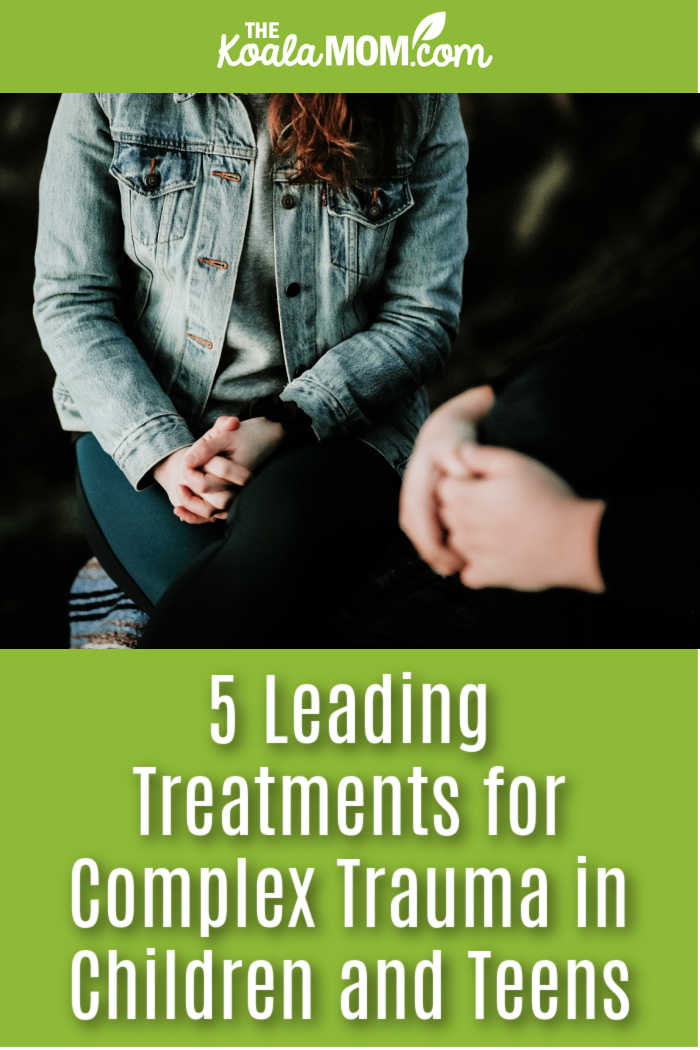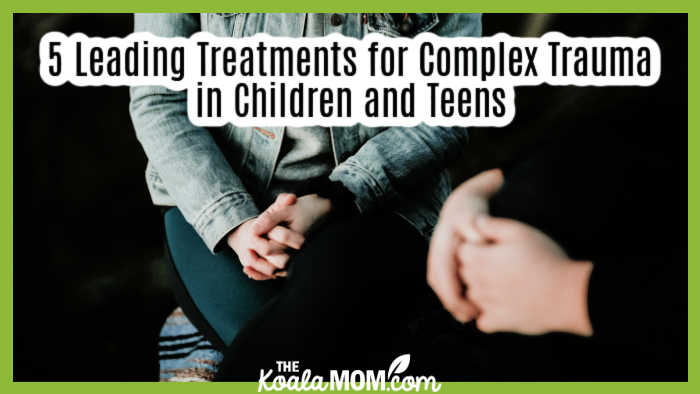Navigating childhood and adolescence is a journey layered with joy, growth, challenges, and, for some, trauma. In an ever-evolving world, where the complexities of modern life interweave with natural challenges of growth, our young ones sometimes bear burdens beyond their years.
Alarmingly, it’s estimated that 10.6% of youth in the U.S. grapple with the harrowing depths of severe major depression. Traumatic experiences, whether arising from domestic abuse, witnessing violence, or prolonged adversity, can magnify these struggles, casting long and lingering shadows over their formative years.
Addressing these traumas isn’t just necessary; it’s imperative to ensure a foundation for a mentally healthy future. Thankfully, there exist treatments that shine a light on the path to recovery, offering renewed hope for both the children and their families.

Trauma-Focused Cognitive Behavioral Therapy (TF-CBT)
TF-CBT is a beacon of hope for many families. It is a short-term treatment, usually spanning several months, and is meticulously crafted to assist children and their caregivers in navigating and overcoming the harrowing aftereffects of traumatic incidents. By focusing on cognitive-behavioral strategies, this treatment equips children with tools to process their trauma and reshape their perceptions of it.
One of the primary merits of TF-CBT is its proven efficacy in minimizing symptoms often associated with trauma, like PTSD, depression, anxiety, and behavioral challenges. However, like all treatments, the success of TF-CBT heavily relies on the adeptness of the practitioner.
Before starting any therapeutic process, it’s crucial to identify a suitable match. Whether residing in a vibrant urban center or a peaceful suburban area, it’s advisable to seek advice from a nearby psychologist. For example, if you’re from San Francisco, consulting the best psychologist San Francisco can offer will lead you to insights tailored to your child’s unique needs, ensuring that the therapy is as effective as possible.
Eye Movement Desensitization and Reprocessing (EMDR)
EMDR stands as a pioneering method that’s capturing attention in the realm of trauma therapy. It functions on the principle of bilateral stimulation, often achieved through guided eye movements. The core idea is to help children process and make sense of traumatic memories, reframing their understanding and emotional response.
For many children, traumatic events breed negative beliefs about themselves. EMDR challenges and overturns these beliefs, allowing kids to see themselves in a light untarnished by trauma. It’s not just about recalling memories but about processing them in a way that mitigates their haunting presence.
Play Therapy
For children, play is not just a pastime; it’s a language. Play therapy taps into this intrinsic mode of communication, offering children a comfortable and reassuring environment to express and work through their feelings. Unlike conventional talk therapies which might be daunting for younger ones, play therapy allows them to communicate their experiences and emotions non-verbally.
The allure of this method stems from its understated nature. While immersed in play, children concurrently develop coping strategies, delve deeper into their feelings, and carve out a secure environment to articulate their anxieties and aspirations. The toys and activities become tools for self-expression, fostering emotional growth and healing in the process.
Attachment and Biobehavioral Catch-up (ABC)
Early adversity leaves indelible marks, especially in infants and toddlers. ABC is a therapeutic approach carved out especially for this delicate age group. It zeroes in on enhancing the bond between caregivers and children, emphasizing nurturing care. By doing so, it helps rectify behavioral and physiological disruptions that might arise from trauma.
A secure attachment forms the foundation for a child’s emotional and psychological well-being. ABC works towards ensuring this foundation is robust. As caregivers are guided to provide responsive and sensitive care, children are better equipped to overcome fear, and anxiety, and develop better emotional regulation.
Dialectical Behavior Therapy (DBT) for Adolescents
Tailored for the unique challenges faced by adolescents, DBT is an offshoot of the standard DBT but modified to resonate with younger minds. Adolescence is often a tumultuous phase, rife with emotional and behavioral challenges.
Amidst this turbulence, DBT serves as a guiding light, offering structured techniques and coping strategies. It empowers teens to confront and dismantle self-destructive behaviors while embracing self-compassion. DBT provides a compass, directing adolescents towards better stress management, and emotional regulation, and fostering healthier interpersonal relationships.
Through a blend of individual and group sessions, adolescents learn vital life skills, ensuring that the echoes of trauma don’t overshadow their journey into adulthood. Additionally, this therapy also equips them with tools to build resilience, helping them navigate future challenges with grace and confidence.
The shadows cast by complex trauma might seem long and daunting, but with the right interventions, they can be dispelled. The treatments highlighted above offer diverse avenues of healing, each powerful in its right.
However, the first and most crucial step remains seeking help. As guardians of young souls, understanding these options and partnering with dedicated professionals can create a nurturing cocoon, allowing our children and adolescents to thrive amidst adversity.


No Responses Yet